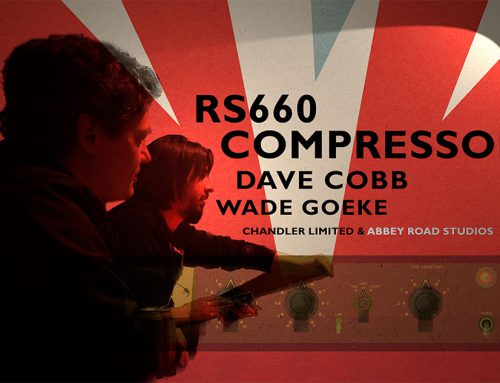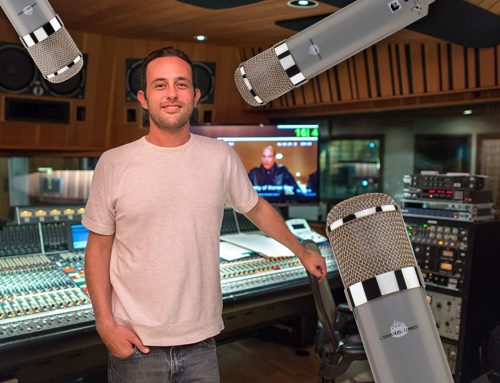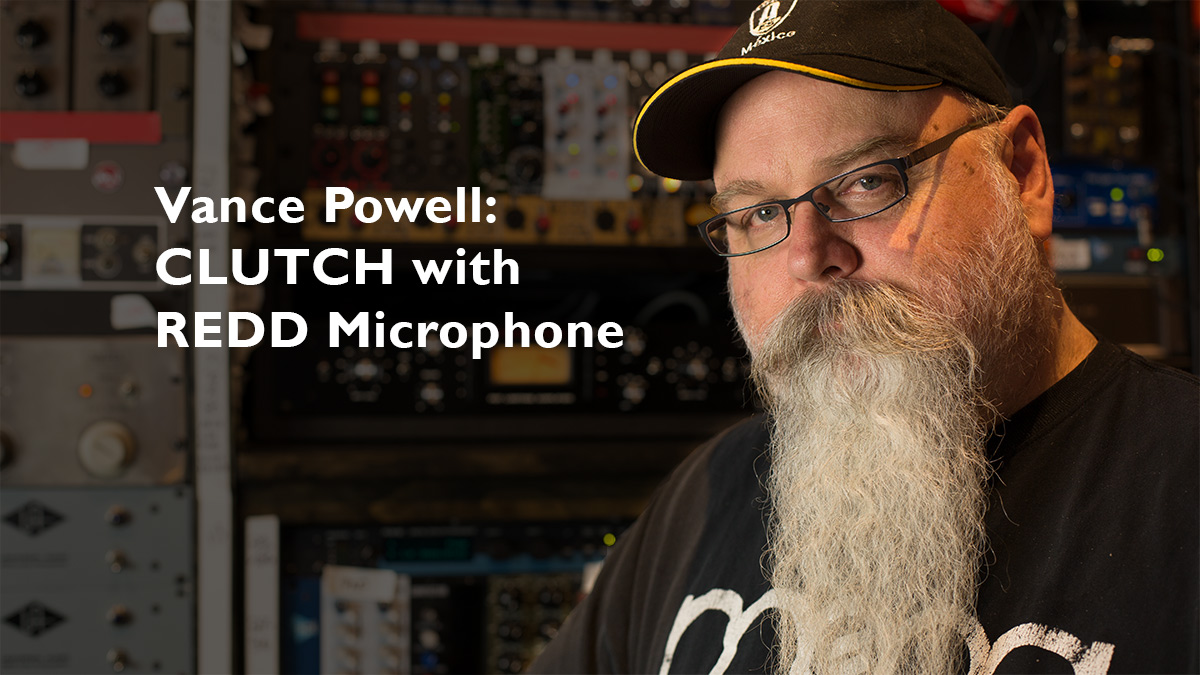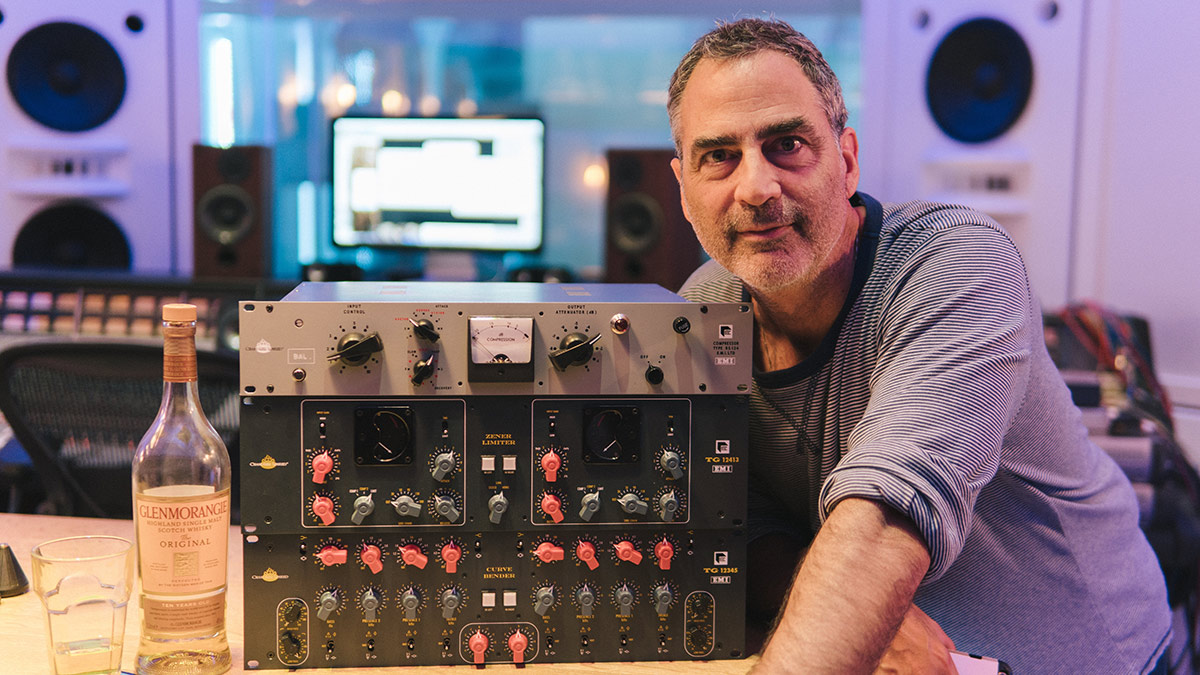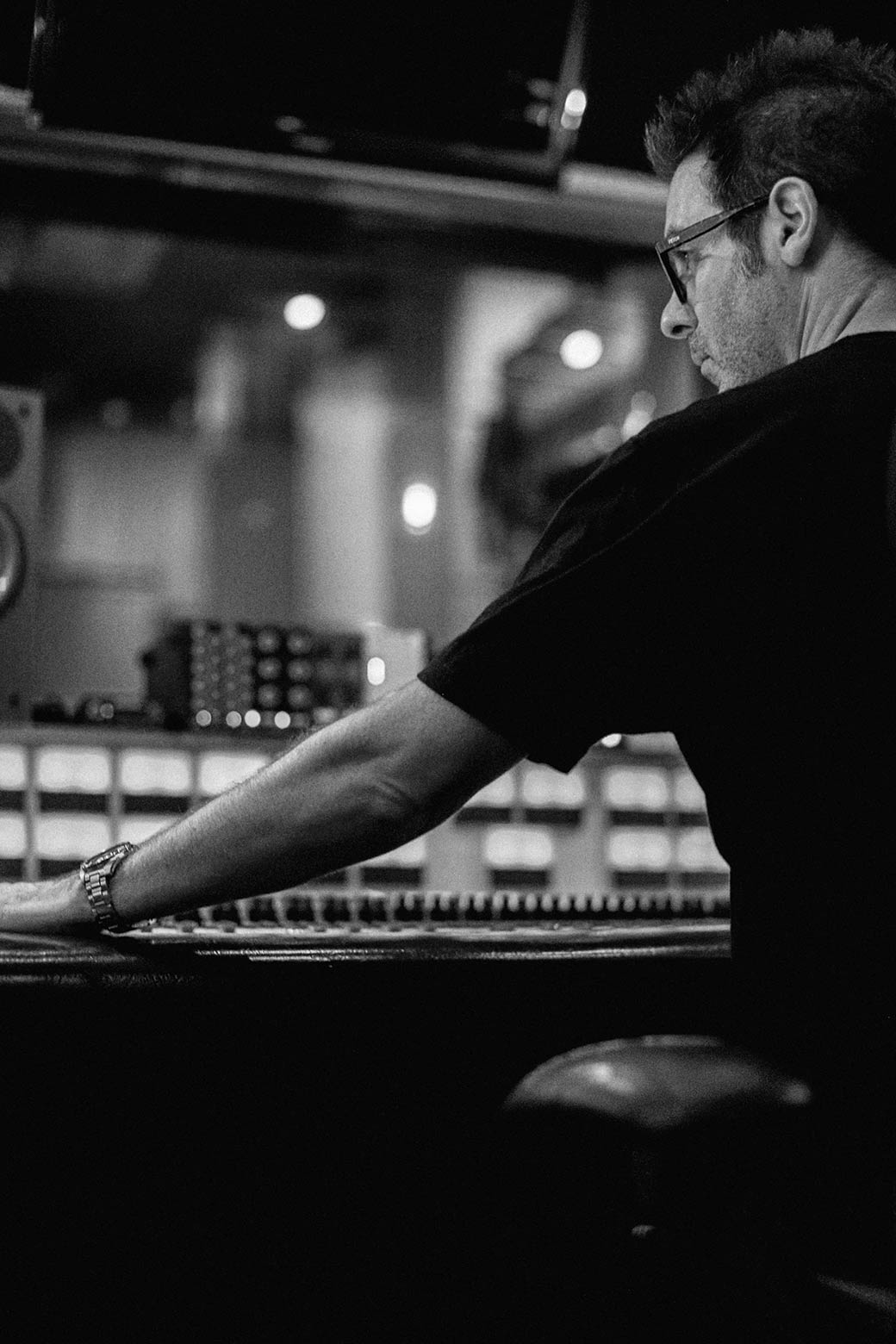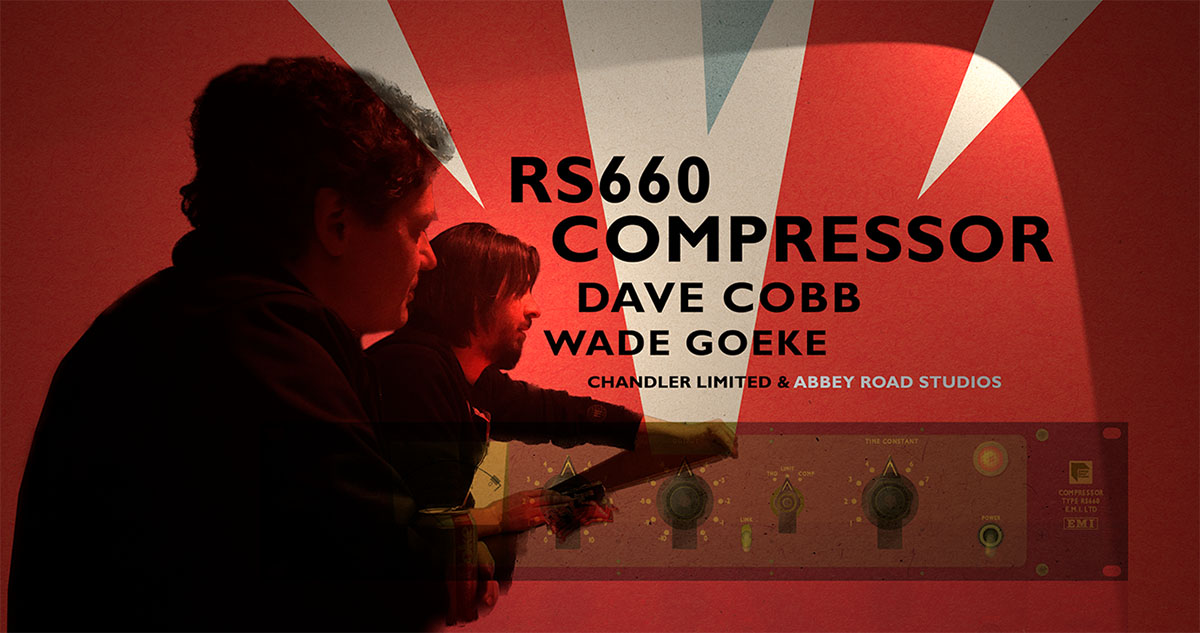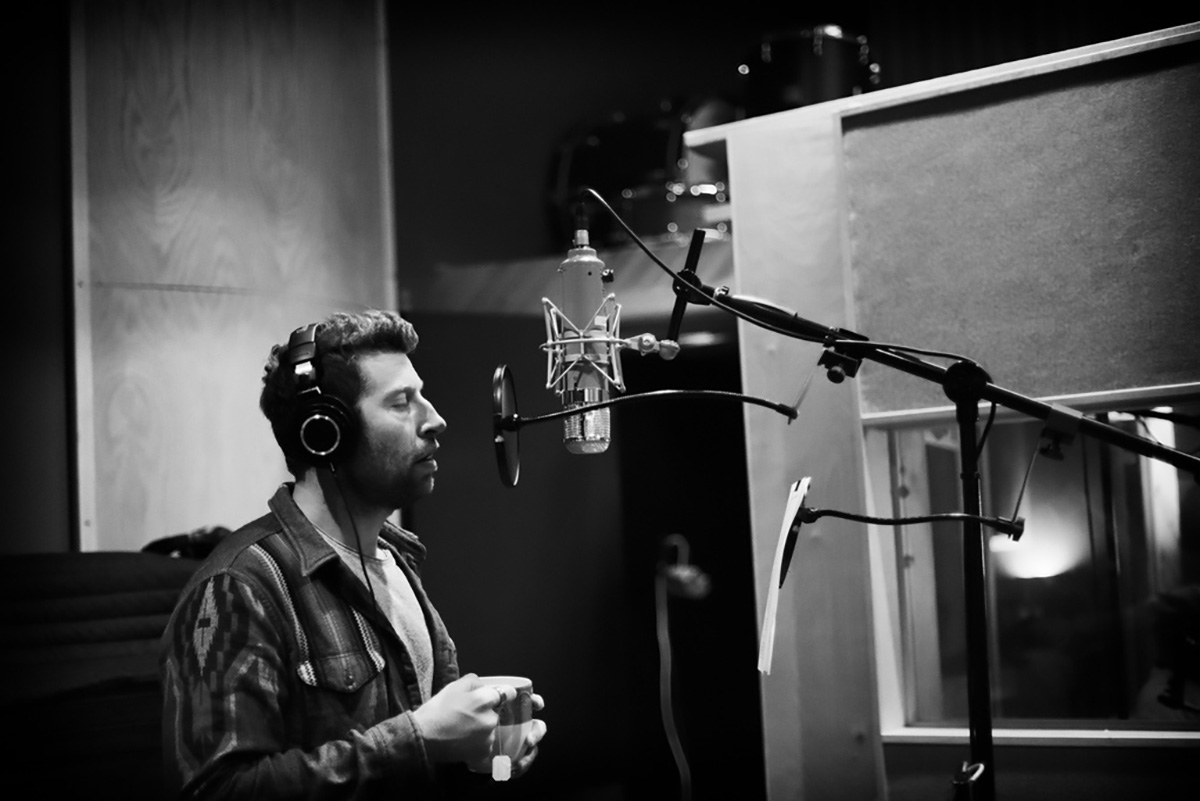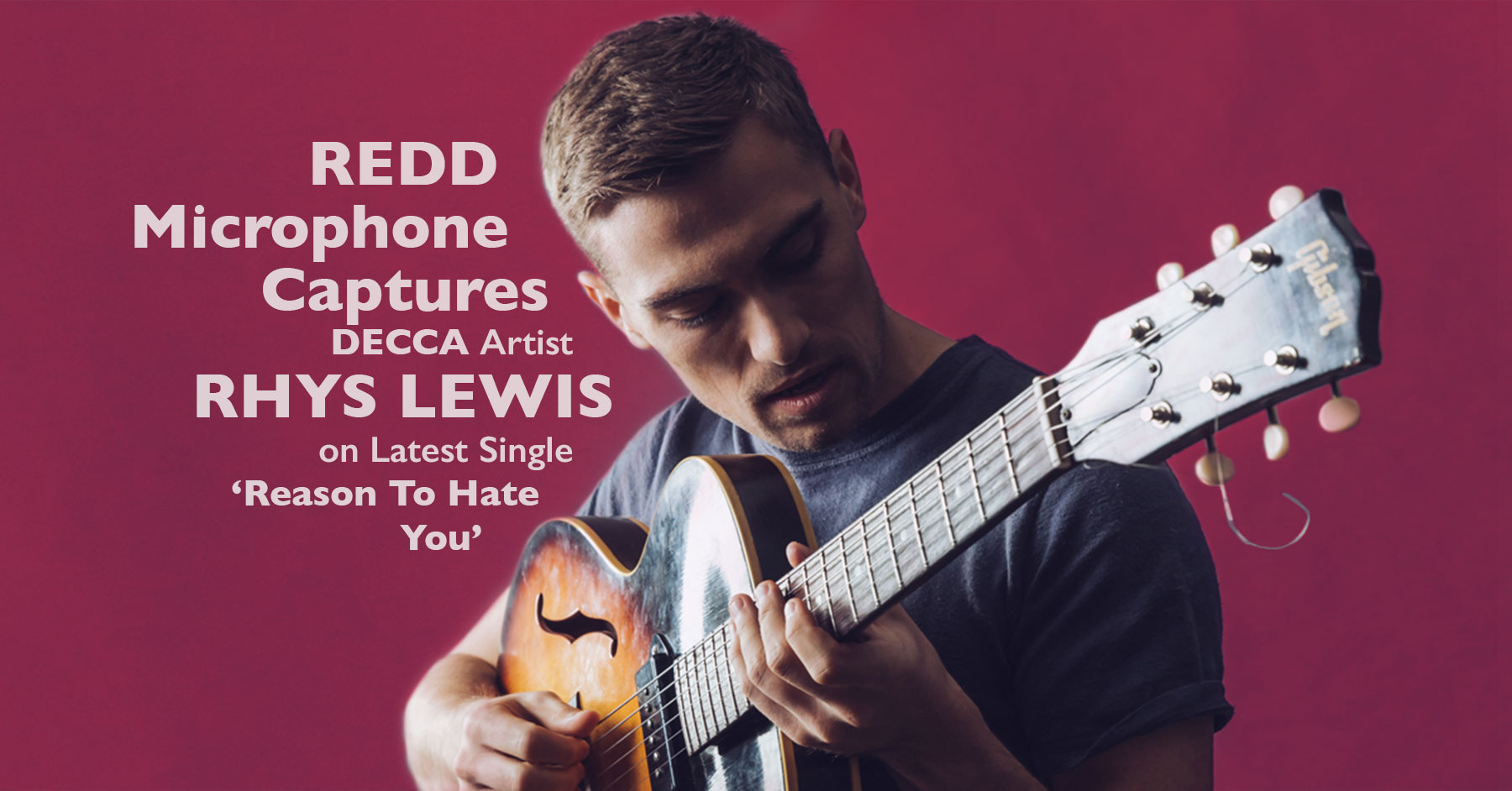
Shell Rock, IA – January 2018…Recording the magic of music often requires a recipe of integral ingredients, each working together to capture the emotion of an artist in the moment. When “the moment” is happening and everything’s falling into place, the feeling of this shared experience between artist, producer and engineer is undeniable.
The story of Decca Records recording artist, Rhys Lewis and his single ‘Reason To Hate You’' recorded by production team Boe Weaver at Studio Humbug using the Chandler Limited EMI/Abbey Road Studios REDD Microphone, is one such example of the often elusive “moment” caught in the act.
Before we journey further, first listen to a sample of Rhys Lewis’ single
‘Reason To Hate You’; the complete track is available on iTunes.
For this listener, the first response to hearing this incredible live studio recording was hair-raising, and instantly obvious why Rhys Lewis was signed by Decca Records. His soul laid bare here, captured to perfection, shows a singer-songwriter in command of their art-form.
To learn more about the artist, the session and how the REDD Microphone was employed in this production, we’ve interviewed producer and engineer, Jim Homes, one half of the production team collectively known as ‘Boe Weaver’, and the main ingredient—Rhys Lewis.
We’ve broken the article into engineer and artist’s perspectives.
ENGINEER’S PERSPECTIVE
CL: Jim, where does this all begin for you all and Studio Humbug?
JH: We came at it from a straightforward angle…in about 2005, I was in a band with my brother, we weren’t a gigging band yet, so we spent our time recording demos. Once they were finished, we let a few friends hear what we were up to and within a couple of weeks—in the most bizarre of twists—Universal signed us to a major record label deal. We made a couple of records with them over a few years and being the predominant songwriters, earned quite well from it. We put that money into the studio and it’s grown ever since; as a ‘studio’, we’ve been open since about 2008.
CL: The studio is located in the Isle of Wight, correct?
JH: Yeah, it’s tiny Island at the bottom of the U.K.; about 26 miles across, with 150,00 people living here.
CL: Are you from there originally?
JH: Yes, my brother and I both are.
CL: It’s been fascinating following Studio Humbug and watching the progression of it, you guys seem to have a lot unique and custom stuff in there and are always changing it up.
JH: It is, over the years we’ve owned a lot of gear and I guess we got lucky with experimental purchases! Everyone that gets into recording seems to go through the, ‘Oh I’m going to buy everything from the pre ‘70s section on eBay’ phase, thinking that just because it’s ‘vintage’, it’s going to sound killer. We went through that phase for a LONG TIME, and we’ve only just grown out of it to be honest. Lots of gear comes and goes, but we have been lucky enough to find several select pieces that we couldn’t live without now. Anything that’s rubbish is gone, we still have our tape machines, etc., but we’re down now to what most people would consider not a lot of gear at all, I suppose.
CL: Well you’ve identified that works for your workflow and what you want to hear…
JH: Yeah, that’s it—it works for us! Humbug isn’t an open studio, so we only have to please ourselves with the gear list.
CL: Do you and Rob share duties in the studio, or do you each focus on different areas?
JH: We’re hired under the name ‘Boe Weaver’ for all production and mix work, and that’s how we’re credited on projects; we do everything together, I can think of only a single instance in ten years that we worked a session separately. Within a session, we have our own strengths and tend to ‘specialize’ on particular instruments for example, but we think, work and approach everything as a team.
CL: You have an extensive mic collection, I mean you’ve used pretty much everything right?
JH: Yeah, we’ve had a lot of mics over the years, from high-end hi-fidelity mics, all the way down to really vibey ‘60s ribbons; we have a big selection. We swap them out a lot, we’re not those kind of people that say— ‘Oh that’s my male vocal mic, or that’s what I use on the kick’, what every day? Fuck that must be so dull, how boring! We have lots of mics and we want to hear them; I’m always that guy that wants to hear a weird combination of sounds— “What happens if we use this harp mic on a kick?”
CL: So, let’s talk about the REDD Microphone, how did you hear about the microphone and what drew you to it?
JH: Well, because we have owned a lot of chandler gear over the years, I follow them closely and every time that there’s a Chandler anything, I always check it out and have a look. I saw the REDD Mic and said to Rob— ‘Wow, that’s a really interesting idea’; I guess I’d pinned it in the back of my mind with everything else, but I kept hearing different people talking about it. Other studios, friends and audio folks I know kept asking— ‘Have you heard that REDD Mic?’ We were all discussing the idea of the preamp inside the mic, etc. Here at the studio, it’d gotten to the point that we were starting to use two control rooms, so we thought the REDD Mic would be perfect, because we could literally take the sound with us to whatever room we were using; all we needed was an in point somewhere, and the sound we were loving upstairs can travel with us to the downstairs room. Having a killer mic—with this killer preamp built-in—that we can move around between us, it was a no brainer. We were also intrigued by the close sound everyone was talking about; getting a really close sound without being pushed up on the mic sounded ideal to me. The final thing that really interested us, was that the REDD Mic isn’t based on anything, I’m not much of one for these rehashes of mics, I’m sure they’re great, but if anyone does something innovative and new, I want to hear it and celebrate it.
CL: Right, so you arranged for a demo then?
JH: We got a demo sorted out with Phil at NOVA here in the U.K. I told Phil that we had an act (Rhys Lewis) coming to us in a few weeks and that we wanted to try a vocal led session—a very stripped recording with just Rhys and a guitar—to me it felt like the perfect test of the mic.
CL: Let’s talk about Rhys! You’ve worked with him prior to the ‘Reason To Hate You’ session, correct?
JH: We have, we’ve been working on his album, that’s set to come out next year. He’s really brilliant in the studio, we’ve been able to experiment and record him every which way, different studios, big rooms, small rooms—we’ve tried everything—just because it keeps things interesting and he is more than capable of handling it.
CL: When it came to this session, what was the thinking?
JH: We had the plan to record Rhys singing and playing his guitar at the same time; the recording really needed to get across the emotion in the song, and we felt that doing it live like this was perfect. Rhys was very much up for it; he’s so infinitely talented and confident—not in a cocky way—he just really knows his craft, and it puts the whole room at ease.
CL: Alright, you have the REDD Microphone for this session, what was the setup?
JH: We got the REDD in the day before, so when Rhys came, everything was set up. The guitar lines were set and the amp was already miced. We got the guitar tone first I think—amp is in the live room—and then we put him in front of this mic [laughing,] and it must have taken…from him standing in front of the mic for the very first time, to us going for takes, ten minutes…
CL: Was Rhys in the live room too?
JH: We had him in a small, dead room, usually where the amps go. We know he sings loudly, so we roughly guessed how much gain we’d need. However, it’s so easy to make flying adjustments with it, that we were able to say— ‘Rhys, could you just…’ and he would be able to switch it down himself. I think that’s a hidden gem with this mic; someone can put headphones on and dial in their own sound, which I think is just amazing.

CL: How do you think Rhys was with adjusting the settings? I mean there’s some out there who think, how can you possibly ask the artist to do that.
JH: He was absolutely fine with it. Mostly it was just flipping between the grit (Norm/Drive) settings and dialing back a click of gain here and there; really simple moves for anyone. It’s just one knob on the back; I think that’s the beauty and brilliance of it.
CL: Okay, so you all are moving quickly and get it dialed-in, what was the initial response?
JH: In ten minutes, Rob and I were looking and each other and just laughing because it just sounded so good. We asked Rhys to come in after a few warm up takes; that’s the ultimate test, because he knows what he wants. Rhys came in—and he was blown away—ultimately, we all stood there swearing for five minutes. We were all just describing the same thing with different words—clear, full, present. We asked Rhys if he was ready to go for takes, and he was, so we just jumped straight in. We weren’t ready for how quickly we were recording, especially because we knew there was going to be nothing to hide behind, this was going to be him and the guitar, so that sound had to be perfect.
By the end of the session both myself, Rob, Rhys and our drummer all wanted to buy a Redd Mic.
What blew us way was that sound was perfect—in ten fucking minutes—and we didn’t do anything. We do have a chain that we generally start with, but we didn’t have to touch it! We had maybe 1 dB on the Phoenix compressor, -2 dB at 60 Hz and +2 dB at 12 kHz on the Pultec EQ; something that wouldn’t make a difference if we hadn’t gone through it. When Rhys sings, he really sings, so the compressor was just there to catch anything.
CL: How did that contrast with prior sessions?
JH: Previously we’ve used lots of different and normally very expensive mics—all great sounding mics—but at the mixing stage, we still felt that we needed to process the vocal further. We’d do things to get a vibe like adding tape saturation or something musical to transform it in some way; with the REDD Mic it already sounded processed, it was done.
CL: What about processing when it came to the mix?
JH: When it came to the mix, we did the guitar first; that was simple enough, so quickly we were on to the vocal. We pushed it (Rhys’ Vocal) up and just looked at each other—it was there, it sounded great! We put it through the UAD Shadow Hills, just to make it pop a little bit that was it, aside from some plate reverb (UAD EMT 140) on it, I swear to god, that vocal sound took all of three, four minutes. That ultimately is what sealed the deal with the REDD Microphone for us.
Rhys, on the day, said it sounds as if it was already processed, like the processing we’d do anyway, but it’s just done.
We were all kind of celebrating the fact that we love this mic so much that we almost forgot that we were recording a song.
CL: Let’s talk about proximity or distance to the mic from the source, what do you think about the ability to be so far off the REDD Microphone?
JH: The thing that worked so well for us, was that Rhys was able to stand about two and half, maybe three feet off the mic. There was space for his guitar and room for him to gesture and really move around while getting into the song; I was a bit worried that it would sound distant or we’d start to hear too much of the room. When we started to listen to the vocal, it just sounded like he had his lips on it. That’s what fucked with my head, it sounded so present, so real and finished, and we hadn’t even started; it felt like we were cheating.
CL: How many takes did you all do?
JH: We did three or four to warm him up, then he came to hear it, we lost our minds over the sound and then he nailed it like two takes later. That’s another thing you know, when a vocalist knows it sounds good, it’s like another level.
CL: Was the final track just one of the complete takes, beginning to end?
JH: Yes, it’s one take.
CL: Talking about the microphone and the setup again, what were the settings?
JH: We had Rhys in the booth, and we had the gain set half way, with Drive on.
CL: …and so, the mic was in Cardioid in that booth, and on the power supply the output was full up at unity gain, and no low contour.
JH: Yes.
CL: Were you able to try it on anything else?
JH: Yeah we did, the next day we used it on an acoustic; Rhys’ very nice Martin. Rhys really hits, like how Neil Young hits, he really plays. We had the mic about three feet back, pointing at where the neck meets the body and it just sung. It did exactly what it does on a vocal to the guitar. We didn’t have the drive on, but it was full and chiming and present without being brutal in any way.
CL: Oh, what was the chain for the guitar amp?
JH: It was a U89 in the hall (room) and Coles 4038 up close, both going into PYEs.
CL: What was the amplifier?
JH: It was a Fender Blues Jr.
CL: Any parting thoughts?
JH: My lasting memory of that session will be how much we were laughing at how good it—the REDD Microphone—is. That’s what we were doing, we were laughing at how fast we got the sound, how good the sound was, how little takes Rhys did. Here’s a statement for you—I believe is true—the session was inspired by the mic, the ease of it, it was new, exciting and I believe that bled over into the performance.
ARTIST’S PERSPECTIVE
CL: First I have to say, regarding your track ‘Reason To Hate You’, great performance, emotion, song writing and recording, it’s all there.
RL: Thanks, that’s really kind of you to say, I appreciate that. I wrote it while I was on tour; it meant a lot to me to get it recorded really quickly, because there’ve been a few songs, especially the last few months, where I’ve recorded songs that are quite old to me now, and I‘ve struggled recording them because I’d lost the emotional connection to them. So, it was important to me to get into the studio as quickly as possible to get the emotion I was feeling down on the recording. I definitely think if you sit on something too long and get used to it when you play it live, it starts to lose its potency to you.
CL: From and artist’s perspective, can you share with us your experience recording this track and using the REDD Microphone?
RL: It’s the first time I ever been in the studio and have been blown-away by a piece of equipment. It’s not just about the audio and I’m not geek-ing out on it because obviously it’s an amazing microphone and it sounds incredible. However, because of that, it inspires you to give a better performance–it’s quality, it’s amazing. We recorded it live and I was able to stand out away from the microphone with my guitar. I was able not to feel like I was in the studio, I'm not up against the pop shield, I’m about two and half feet from it and it still sounds like I’m up close, the way it sounds, it was just insane.
CL: As an artist, where you just want to concentrate on the performance, how did you feel about being able to tweak the mic settings yourself on the spot?
RL: Yeah, it was awesome, really cool…and actually especially since I’m really fussy about how I want things to sound in my own headphones—I’m sure a lot of artists are as well—you want your monitors to feel good so you can give a great performance. I think this microphone makes it so much easier for the artist to be in control of that, and to make those fine tweaks so that you feel inspired by what you’re about to put down and to give the take you hope that’s going to be the one. As soon as you hit record, you don’t want to be distracted by the sound changing and not being in the right space, so the fact that it was so easy to get a great sound—it didn’t take too long to dial in something that we were really happy with—and sounded amazing and was inspiring to perform with, it meant that the session flowed easily and before we knew it, we were putting a few takes down. Not having to tweak the sound between each take and not having to worry about it, we just got it so quickly and that made a massive difference. Sometimes you can get caught in the nitty-gritty, struggling to get the right atmosphere, whereas with this, it was just there.
CL: What about using the Drive setting?
RL: Well, again that was so cool to play with. The fact that we had another variable to play with and it actually added to rawness of song and the lyrics, adding an emotion to it itself; it gave a color that I think really echoed what tracks about.
CL: You were clearly able to live inside the emotion of the performance on this recording, it sounded like the REDD was a perfect fit for you.
RL: Yeah, it’s honestly a very musical piece of equipment. When you start putting an album together, you learn what you like or don’t like and towards the end of the process, I realized that when I’m singing and playing at the same time, I give a better performance. You think, ‘oh we’ll comp it’, because that’s how people do it these days, and they get the perfect vocal where every line’s amazing, but I think knowing what I’m like as a musician or when I play live, I feel like I connect with my own music better when I do it like that. This mic works really well, not just for the sound of it and the variables you can change—and the preamp is just phenomenal—but also the fact that it’s so good when I was moving around and getting into my performance; I don’t have to stay hot on the mic. Jim was actually worried because during the take I was wondering left and right and swaying with the song, and he’s looking at me like— ‘I don’t know why it’s not changing the sound, is there something going on?’ When we listened back to it, you cannot hear that I’m moving around and vocally going off the center of the mic, it was just all there, the body, presence, everything, it just captured it. That’s just phenomenal because suddenly you’re not in a studio, you’re in your own little world and you don’t have to think about— ‘Am I on the mic, am I singing into the sweet spot, do I need to be closer, further back, is it going to peak?' As soon as we used it, I was thinking, well I need to get one, because it’s a really great tool for me as a musician.
CL: And you can take it anywhere on the planet and you have your sound…
RL: That’s what’s cool as well, because it comes with so much and you get the amazing preamp that I think obviously pairs with the mic perfectly. There are a lot of people that struggle, they buy the right mic and then get a great preamp and don’t know why it’s not really working in the way that they want it to. Obviously there’s loads of great mics and preamps out there, but there’s an art to pairing them. When you know that here’s a great mic with the preamp that works best with it and is designed for it, it’s a no brainer.
CL: Stepping back for a moment, I think what I’m hearing from you—correct me if I’m wrong—what I’m hearing is, there’s almost another element where you were able to work the microphone as an instrument in its own right?
RL: Definitely, it’s musical and I was blown-away. I’ve worked with U47s, U89s, old mics and new ones…I just can’t wait to do more with it. I think about the possibilities of characterizing a sound or getting that closeness and intimacy which I’m always looking for with a more stripped back song, and this one just seems to have it straight away. For me it’s the most amazing thing as a performer, it draws you in, and naturally as a listener you’re thinking— ‘How did they record that?’, because it’s so good.
CL: That’s interesting…a comment we hear a lot, is that the REDD Mic has a ‘finished sound’ to it right out of the gate.
RL: Yeah, the mix was a joke, because we really didn’t do anything to it. I think there’s the tiniest bit of compression on it and smallest carve of EQ. There’s literally no need to do it, so why would you do it? You don’t need to touch it, and because of that, it does change your mentality when you’re in the session and trying to put it down in a take that feels inspired. You’re not going to get caught in— ‘How are we going to get the compression to sound right or EQ?’, it works and you don’t get caught up in the technical side of things because it sounds so good. You can just enjoy the session and not thinking ahead to, is it going to sound good when we mix it, it just sits in the track and instantly you’re inspired by what you’re listening back to. I think it’s underestimated of how important that is in a session, when you want to work quickly and get something down that’s exciting, or to put more things on a track, for me it’s just amazing.
CL: What's been the experience prior to the REDD Microphone?
RL: There’ve been some sessions where we’ve done four or five takes of a vocal, and then Jim’s been like— ‘We’re not thinking it’s present enough or if it’s going to need more EQ, do you mind if we try a different mic?’, they put two mics up and we A/B them—all we’ve ever been looking for with those kind of things is the sound we got from the Chandler REDD Microphone straight away.
CL: It makes it easy!
RL: Yes, it just makes it easy. As producers, writers or music geeks, you do sometimes get stuck in the technicality of things, but then ultimately all we’re trying to do in the recording studio is communicate an emotion. As cheesy as that sounds, you’re making decisions every step of the way, like— ‘Why would I use that mic on this snare or why go for that drum sound?’, to communicate this and production becomes a part of metaphor of the song or meaning. I think if you get bogged down in that too much, you’re not doing it for the right reasons. I just think some things, especially on a vocal, you want it to sound honest and pure, we didn’t have to worry about anything other than that.
CL: What are you final thoughts on the REDD Microphone?
RL: Once Jim and I heard it, we were like we can't really go back.
Rhys Lewis’ track “Reason To Hate You” is available on iTunes.
To learn more about Rhys Lewis, visit www.rhyslewisofficial.com.
To learn more about team Bo Weaver and Studio Humbug, visit studiohumbug.com.
We’d like to thank Rhys Lewis, his team and Decca Records for allowing us the privilege of sharing the sample of “Reason To Hate You”, and team Bo Weaver for exposing Chandler Limited to this incredible artist.

